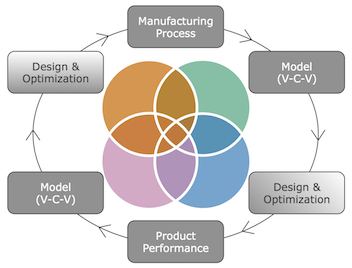
Discrete particle modeling and micromechanical characterization of bilayer tablet compaction
B. Yohannes, M. Gonzalez, A. Abebe, O. Sprockel, F. Nikfar, S. Kang,
and A.M. Cuitino
and A.M. Cuitino
International Journal of Pharmaceutics, Vol. 529, 597-607, 2017
[Journal]
[GoogleScholar]

Abstract
A mechanistic particle scale model is proposed for bilayer tablet compaction. Making bilayer tablets involves the application of first layer compaction pressure on the first layer powder and a second layer compaction pressure on entire powder bed. The bonding formed between the first layer and the second layer particles is crucial for the mechanical strength of the bilayer tablet. The bonding and the contact forces between particles of the first layer and second layer are affected by the deformation and rearrangement of particles due to the compaction pressures. Our model takes into consideration the elastic and plastic deformations of the first layer particles due to the first layer compaction pressure, in addition to the mechanical and physical properties of the particles. Using this model, bilayer tablets with layers of the same material and different materials, which are commonly used pharmaceutical powders, are tested. The simulations show that the strength of the layer interface becomes weaker than the strength of the two layers as the first layer compaction pressure is increased. The reduction of strength at the layer interface is related to reduction of the first layer surface roughness. The reduced roughness decreases the available bonding area and hence reduces the mechanical strength at the interface. In addition, the simulations show that at higher first layer compaction pressure the bonding area is significantly less than the total contact area at the layer interface. At the interface itself, there is a nonmonotonic relationship between the bonding area and first layer force. The bonding area at the interface first increases and then decreases as the first layer pressure is increased. These results are in agreement with findings of previous experimental studies.






